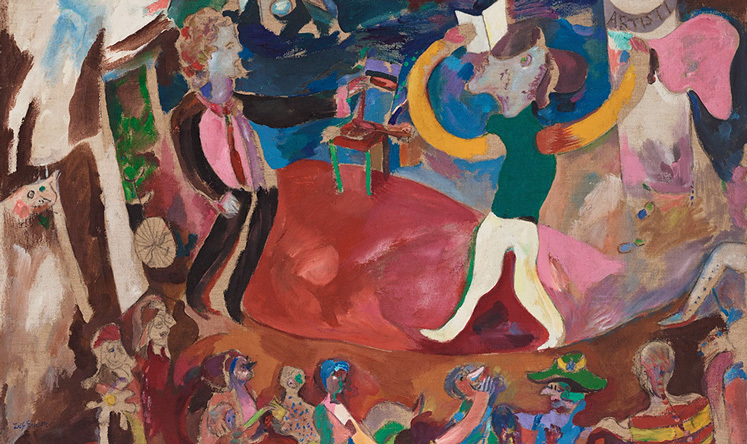Leif Ericson - From art comes the joy of life
BUKOWSKIS - WHERE COLLECTIONS ARE SOLD
LEIF ERICSON
“It's like an adventure to let the picture emerge on the white canvas, to outline the motif with a charcoal pencil, and then let the picture become a playground for color, rhythm, and imagination. Every time is an equally exciting experience.” - Leif Ericson
Leif Ericson was born in 1927 in Mölndal. His father, an employee at the Papyrus paper mill, often brought paper home for his son, who began drawing and painting at an early age.
During his studies at the School of Arts and Crafts in Gothenburg from 1946 to 1949, he saw Endre Nemes's major exhibition at the Gothenburg Art Hall in 1948. The exhibition deeply impressed him and led him to apply to the Valand School of Fine Arts, where Nemes was a professor.
His time at Valand from 1950 to 1955 was decisive for Ericson's continued creative development. In an artist collective known as "Kåken," spontaneous trad jazz jams emerged with Leif Ericson on drums, forming the "Landala Original Red Hot Stompers." The same circle established the artist-driven Gallery 54, which is still run by new generations today.
Ericson also embarked on study trips to, among other places, England, the Netherlands, Belgium, and France. His travels in Europe became a significant source of inspiration; he encountered colorful and imaginative carnival processions in the medieval town of Binche in Belgium, visited magical puppet theater performances in Czechia, and enjoyed jazz. All these impressions were gathered and later processed in his studio.
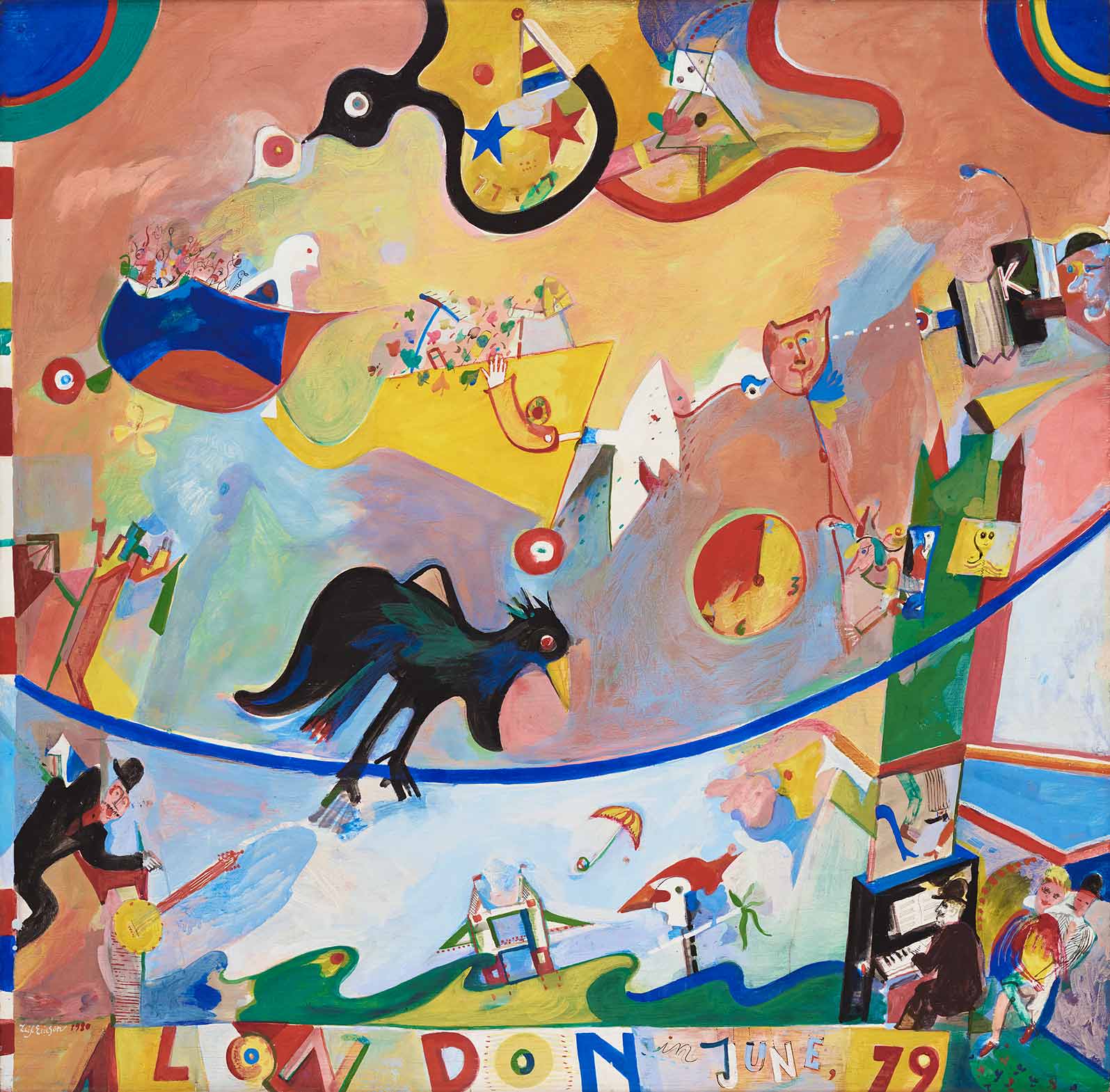
› "London in June". Estimate 12 000 SEK.
Leif Ericson has had around thirty solo exhibitions since his debut at Konsthallen in Gothenburg in 1960. These exhibitions took place at various venues including Konstnärshuset, Galerie Blanche, Grafiska Sällskapet, Candyland in Stockholm, Olle Olsson-house in Solna, Galleri 54, Göteborgs Konstförening, and Galleri Aveny in Gothenburg, as well as museums in Luleå and Eskilstuna. He has also exhibited at Galerie Gammelstrand in Copenhagen and Fredrikshamn's Art Museum. Alongside other students of Nemes, Leif Ericson has participated in collective and traveling exhibitions shown in Sweden, Italy, Scotland, Norway, Germany, and Holland.
Over the years, Ericson has undertaken numerous public commissions, starting with the first assignment for Nya Ullevi in Gothenburg in 1960 - a stucco mural named "Skilda banor," executed in collaboration with Domenico Inganni. His commissions have extended to schools, universities, hospitals, health centers, cultural houses, and other public buildings.
Leif Ericson's works are represented in esteemed institutions such as the Nationalmuseum and Moderna Museet in Stockholm, Göteborgs Konstmuseum, and museums in Linköping, Malmö, Borås, and Laholm's Drawing Museum. Additionally, his art has been acquired by numerous municipal cultural committees and county councils.
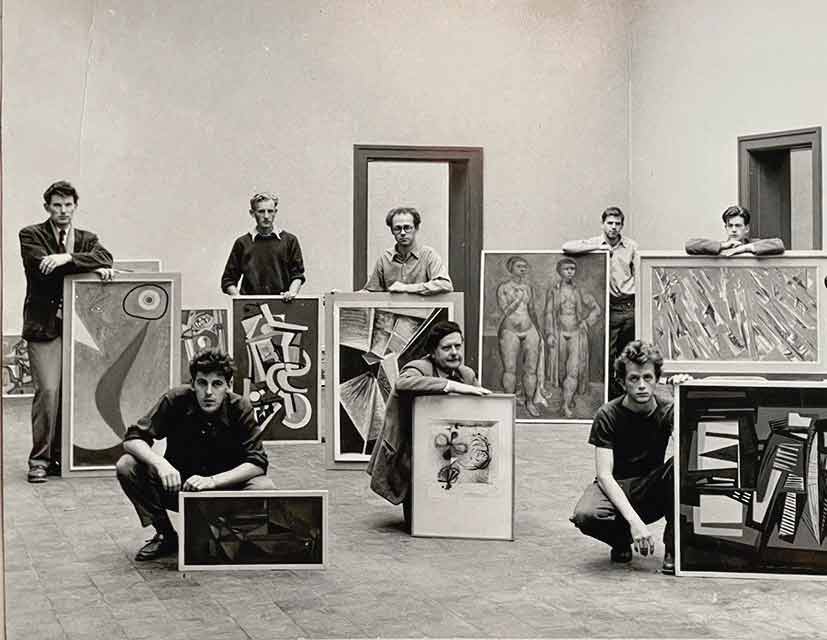
› ”Tio från Nya Valand” 1954. Photo: Ulf Thorén.
FROM MÖLNDAL TO MILAN
A blue crow with musical notes floats freely in an infinite universe, playing with a mischievous beak and penetrating gaze along the red violin strings. For Leif Ericson, it was obvious that art was a crucial part of society and should be prominently displayed. Thus, the monumental-sized crow was painted for the health center in Svärdsjö. Art was an indispensable part of shaping the public environment, whether it was about freely hanging works in school ceilings, lunchrooms, hospitals, or frescoes and tiles near universities, swimming pools, and sports facilities.
Jazz tones and drum rolls from narrow carnival alleys in Walloon Binche and other journeys permeate Leif Ericson's paintings. He was an early driving force as a drummer in The Original Landala Red Hot Stompers and a dedicated stepper alongside the marionette doll Blue Monday. The duo's numerous performances were highly anticipated, especially at outdoor parties in Dalarna and the summer studio at Solhäll.
Solhäll and the studio in Enskede were important hubs in Leif's creative process. There were sketchbooks and diaries, travel notes, paper dolls moving in the drafts, and masks in various color cascades that changed expressions as the light streamed in. Impressions were gathered, processed, and drawn with charcoal on the white primed canvas, which was then filled with color and rhythm.
Carnival euphoria, playfulness, acrobatic balance, dance, but also threateningly frozen jesters. Leif Ericson had his artistic agenda paired with solid knowledge. Even as a child, he built roads and castles in the sand. His unlimited access to paper was used extensively for drawing. The encounter with Endre Nemes and studies at Valand were significant. Students gathered around the exiled teacher and artist as he cracked eggs and poured them into a bottle with yellow, mastix, and water to demonstrate how to make tempera.
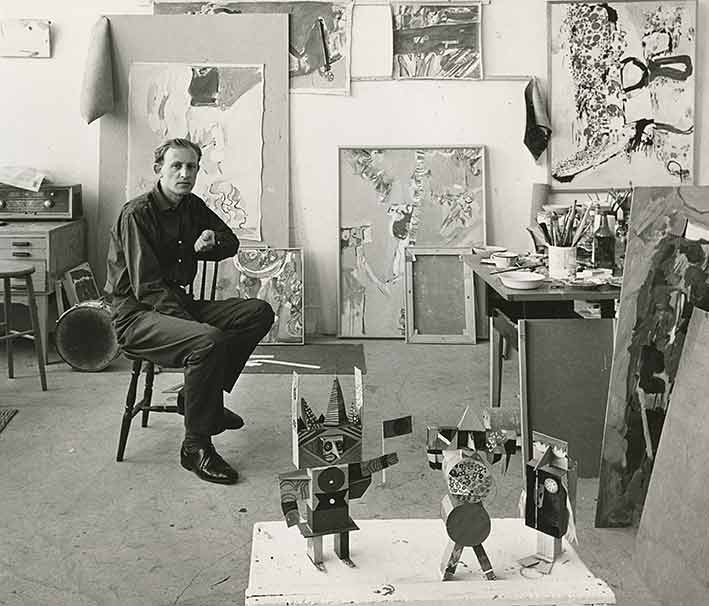
› Leif Ericson's studio. Photo: Olle Waller.
The bricklayer Domenico Inganni was hired and arrived with trowels, chisels, polishing irons, and crushed bricks, teaching how to build frescoes. An old press for copper graphics was restored, and the students, especially Leif, who partially funded his studies by printing the teacher's sheets, gained solid knowledge of various graphic techniques. Endre Nemes also opened the door wide for his students to the world beyond their hometown and the Gothenburg colorists. For instance, to Milan, where Leif traveled with his teacher to introduce Swedish art to a new audience. Jazz and football matches at San Siro were also part of the agenda. Cross-currents were created through study trips across Europe, financed by portfolios of graphics produced by the students themselves.
Naturally, there was an outcry, and the students of Valand were subjected to massive criticism. But they were also praised. For instance, Peter Weiss, wrote in the magazine Vi in 1950: Valand's intense transformation, the bold break from a national tradition, is an event in Swedish art history.
This allows us to continue tracing the artistic development that this initiated in Leif Ericson. How he created his expressions and constantly questioned and refined them. Curious, unpredictable, and deeply personal. Something that resulted in works like "Min poetiska karusell", "Vinterresa", "Dansk cirkus", "Metromusik", "Dockspelaren", and "Tivoli i Milano".
– Kersti Bergold, 2023
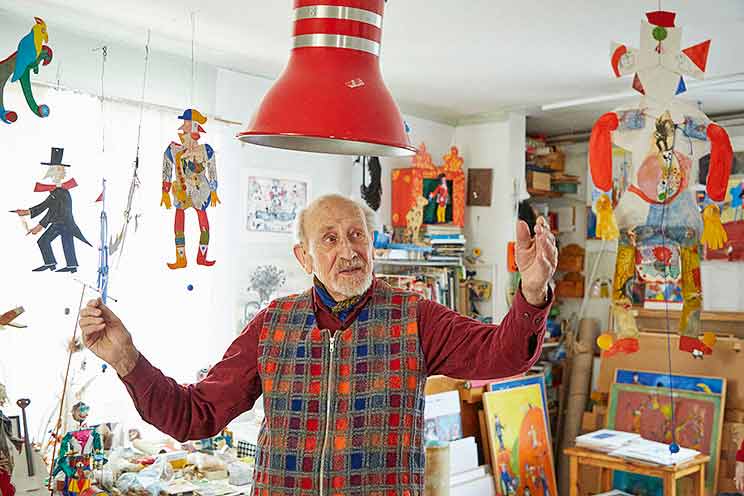
› Leif Ericson in his studio. Photo: Norio Kidera.
Bukowskis has been entrusted to sell 65 selected pieces from the estate of Leif Ericson. The collection will be exhibited from January 23rd to 26th at Bukowskis, Berzelii Park 1, Stockholm.
To the collection
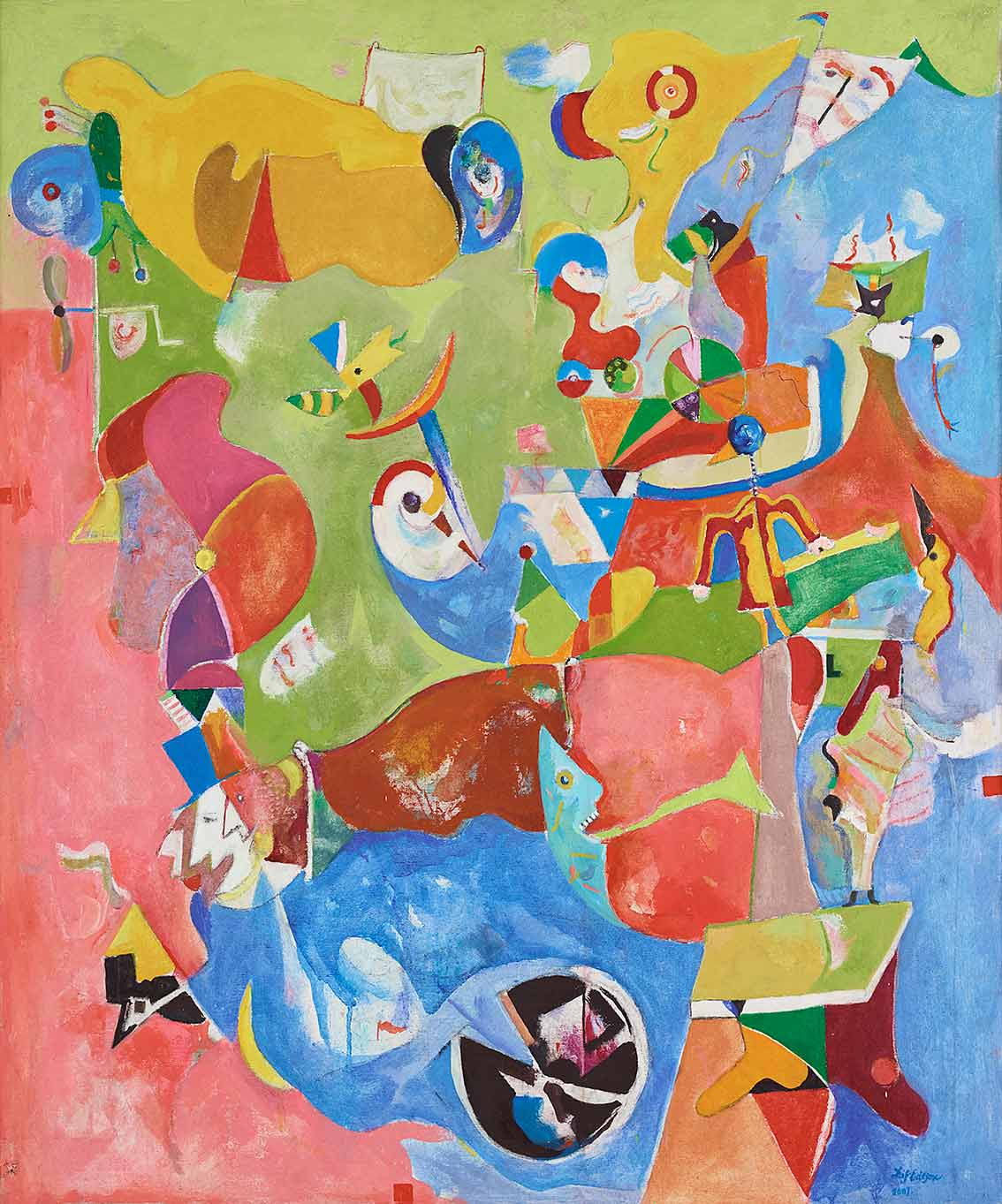
› ”Sommarglädje”. Estimate: 8 000 SEK.
Requests & condition reports Contact specialist

Stockholm
Lena Rydén
Head of Art, Specialist Modern and 19th century Art
+46 (0)707 78 35 71
